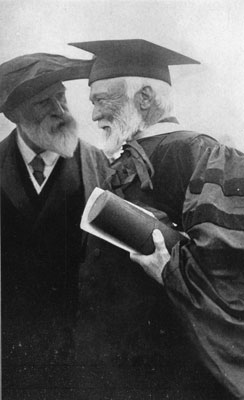Private funders have been trying to influence and improve the teaching profession for more than 100 years, and a new report on philanthropic support of teaching outlines that history. The report is funded by the Ford Foundation, and is glowing about the role that private funders, from the Carnegie Corporation to the Bill and Melinda Gates Foundation, have played. (The Hechinger Report receives money from several funders mentioned in the report, including these last two.) But although it’s not very objective, the report raises some interesting and sometimes ironic historical facts. Here are some excerpts:
“Funders supported the establishment of normal schools or other training programs to prepare teachers. In 1875, for example, the Peabody Education Fund, created by George Peabody, founded the Peabody Normal School, which today is the Peabody College of Vanderbilt University. Twelve years later, Grace Dodge founded the New York School for the Training of Teachers, which became Teachers College, now part of Columbia University.”
Carnegie got involved by creating the Carnegie Corporation, for distributing grants, along with the Carnegie Foundation for the Advancement of Teaching, “originally intended to be a “professorial pension fund” for retired teachers.
After some foundations helped to start teacher training programs, other private funders became concerned about their quality:
“Carnegie Corporation funded an examination of teacher preparation programs by James B. Conant, the former president of Harvard University. His examination and critique of teacher preparation programs, published as The Education of American Teachers in 1963, was scathing. Among other things, he charged that teacher candidates were drawn from the least prepared students, that there was little interaction between subject-matter faculty and faculty from schools of education, and that poor supervision of practice teachers was the norm. He went on to describe the ‘foundation’ courses commonly included in teacher training programs as ‘pathetic.’”
Then they began looking at salaries: “In a series of reports about teachers in the 1950s, Ford called for a merit pay system to replace salary schedules. One report stated, ‘The weakness of the typical salary structure in teaching is not simply that it is in general too low but it is too rigid—too narrow from top to bottom, too unrelated to ability and performance and too prone to treat all teachers and all teaching assignments as if they were essentially identical.’”
These days, funders are worried about many of the same issues that bothered them half a century ago, but their strategies are different:
“More focus on evaluation, more funder involvement and more support for non-traditional actors surged in the mid- to late-1990s with the emergence of venture philanthropy and strategic philanthropy. Similar in approach, both are based on a business model and typically include developing comprehensive, research-based plans, setting clear goals and identifying metrics for measuring progress. They also entail close working relationships between funders and grantees and preference for new actors over traditional institutions that are often seen as part of the problem instead of a source for innovative solutions.”
You can download the report here.




